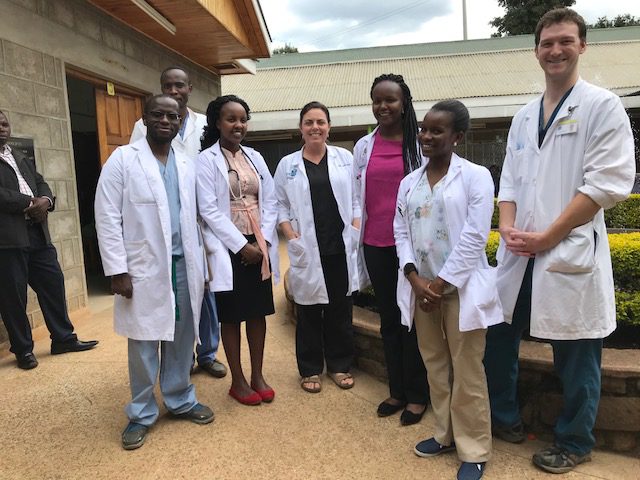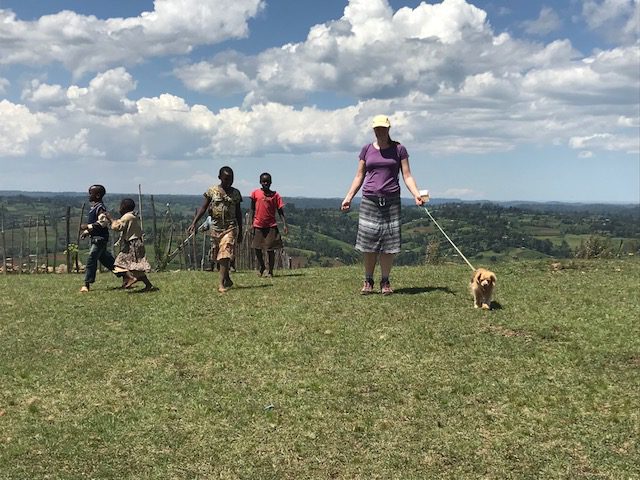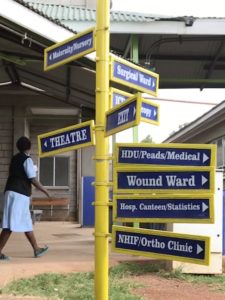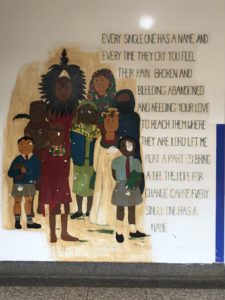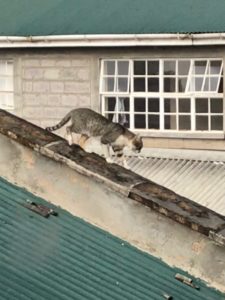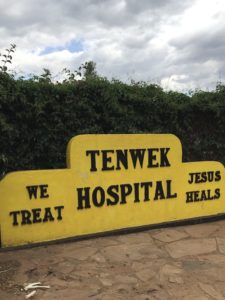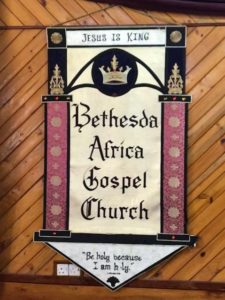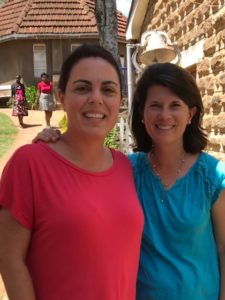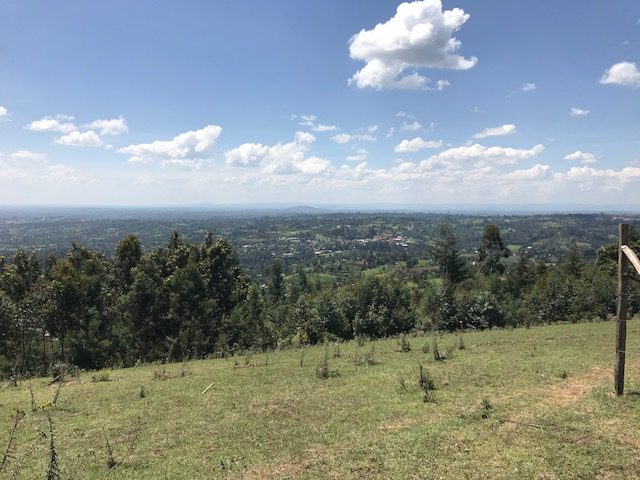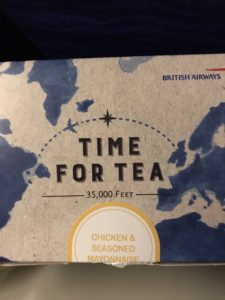Pediatric Wards Day 2
December 5th, 2017 by georginagreen
Posted in Uncategorized|
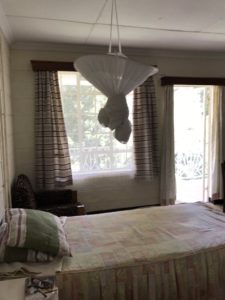
Last night before I went to bed, I looked through the charts of the children who were on our service, making mental notes of the things I needed to review, questions about physical exams and medications, etc.
I was looking forward to seeing two new admissions. There was an 11-year-old girl with HIV and cancer. Her medication list included zinc supplementation, another random gap in my knowledge, so I read more about zinc deficiencies. There was also a 15-year-old boy who came in with an inability to talk, generalized weakness and excess salivation. I came up with a broad differential including diphtheria, toxin exposures, etc. I was so curious. (Really, ask me about diphtheria now.) We are told as medical students that when we hear hoofbeats, look for horses instead of zebras. What’s common is common. Today I was told by one of the long-term doctors to look for zebras. I have always loved zebras. (I saw one in the wild on the way here from Nairobi.)
When I got to the hospital this morning, I learned that the young girl had died a few hours before, discovered by the intern while pre-rounding. And on rounds, it was apparent that the teenage boy had a conversion disorder, i.e. psychosomatic illness. He was upset after having an argument, “a disturbance,” with his family the night before his symptoms appeared. He was matter-of-factly discharged after a full work-up was negative, including head CT on arrival.
The head CT was a big deal. Again, here it is sometimes cheaper to do surgery than to get a CT, which costs about $100. Just let that sink in.
During didactics one of the interns gave a presentation about DVT and pregnancy. Lots of good take-aways. Did you know that blood clots during pregnancy are more often in the left leg? We ended with a discussion of management guidelines in Europe, different medications that are used, and what would be practical in this setting. For example, machines are routinely used in the US for intermittent compression of the lower limbs to prevent blood clots when people are on bed rest. They are not part of routine DVT prophylaxis/prevention over here or in Europe.
We rounded for another hour then took a break for “chai talk” with chai tea and mandazi (Kenyan buns) as one of the Kenyan interns discussed management of meningitis. This led to a debate of whether one of our patients had bacterial or TB meningitis, as well as the best way to control her high blood pressure. This 13-year-old girl, who was not talking when I first saw her before the weekend, is now able to talk. She knows who she is and where she is and is able to verbalize her pain and other concerns. She was treated for bacterial then TB meningitis and is showing significant clinical improvement. I spent much of the afternoon reviewing diagnosis and treatment of various forms of meningitis. It’s a bread-and-butter topic for physicians, and every time I come across it, a little more sinks in. As a visiting resident at Children’s Mercy I saw a baby who had a stroke from GBS meningitis, and I saw several children with viral meningitis. TB meningitis is new to me.
This brings us to the topic of blood, wound, and CSF cultures. The cultures that are sent to the lab here rarely grow anything, which makes treatment difficult. I think about the Infectious Disease docs and lab directors that we rely on so heavily at Research Medical Center and how nice it would be to have their brains here to try to fix this problem. Automated machines are the gold-standard in the US, but it’s not affordable here right now. Smart people here are putting their heads together to figure this out.
After chai talk, we went upstairs to round in the nursery with mostly preemies, some of whom are getting better, some getting worse. More about the NICU later.
Dr. Caldwell helped us determine treatment for the lower extremity wounds of an 11-year-old boy with heart failure secondary to rheumatic heart disease and a VSD (ventricular septal defect, a hole between the lower chambers of his heart). It’s not operable (there are visiting cardiac surgeons who do all kinds of things here…), he’s on palliative care, and probably only has a few months to live. If he were a healthy boy with the same wounds, he could have surgical management and would be taken to the OR (called Theatre here) for debridement, and then skin grafts. As it is, he will have only medical management, with antibiotics and wound care, with the goal of prolonging his life and minimizing his suffering.
I helped the intern change the dressings on the boy’s leg then remove dirty sheets from the bed. The interns left to do other work, and I asked the uncle if he needed help putting new sheets on the bed. So he lifted the boy while I changed the sheets. The teenage boys in the bed beside him thought this was hilarious. I don’t speak Swahili or Kipsigis, and the uncle was at first reluctant to speak English to me. Then the uncle ordered/asked me to get clean blankets and told me to report back to him, which was also amusing to the boys. I asked a nurse to help find blankets. I guess doctors don’t change sheets. The family members are probably expected to do it. And I realize that the only way to function well in this place is to learn Swahili, since I’m constantly asking the interns, “What did he/she say?”
PS There are 14 beds in one ward and 18 in the other, not all occupied. Beds are next to each other with a bedside table separating them. On the far wall of each ward is a mural that needs touching up. One is Daniel in the Lions’ Den. But the lions don’t look too menacing.
I’ve been reading The Miracle at Tenwek, which most visitors probably also read during their first visit here. It’s the story of Dr. Ernie Steury, and it’s fascinating to learn about the recent history of this hillside in Kenya. I’ve been walking the paths of this complex today, going through the gates of the hospital, and thinking about the people who have walked these same paths and the work they’ve done. There is a river and waterfall just down the hill from where I am. The hospital uses hydroelectric power from the waterfall to generate power for the hospital, has its own water supply and water treatment and is largely self-sufficient in that way. There are so many stories here.
I want to take pictures of the area right around the hospital, but I don’t want to be rude. Let me just say that there are chickens, dogs, and cows randomly in the street. There are little lizards on sidewalks and walls. I haven’t seen any cats. I wish I could just show you a picture, so I’ll work on that. There is a narrow, paved winding road at the edge of the hospital that curves down and to the left, there is a covered entrance to the area behind the hospital where the missionaries live. On the paved road, the edges are crumbling, and there aren’t sidewalks. There are moped taxis lined up at the top of the hill. It’s common to see four people on a moped. Or more.
On the left there’s an ambulance bay for the ER (they call it Casualty) and a gated courtyard where patients enter for outpatient or emergency services. On either side of the road there are small stalls, as if built by hand out of bricks or wood. Once brightly colored, paint now faded, they have unlikely names on their hand-painted signs, like Computer College. There is a butcher in a tiny stall with plexiglass doors with a large carcass hanging down. There are women selling bananas, sodas, clothes. There are so many men, women and children on the sides of the streets standing about.
There’s a lot of hand-shaking here. A lot. Germaphobes would not do well here. It’s a nice custom, and I’m not quite used to it yet.
The people that I sat next to on the plane said that I would love the Kenyan people. I teased them both, saying they were only saying that because they’re Kenyan. They were right. Lots of good people here.
I went to an HBCU in Atlanta for grad school, a historically black college, and got used to being one of the only white people on campus. It doesn’t feel strange to be white here. It feels strange to be a foreigner, a non-missionary, and mostly, to not speak Swahili. I think if you spoke the language and made friends, this could easily become home, or at least home away from home.
Note: I keep saying, “the intern,” because I haven’t asked if I can use their names in this blog. I will have to post separately about the interns on my team and the family medicine resident. They are…so great.
I would post this, but the internet is down, has been since I got off work. Will post when I can.
